*NURSING > QUESTIONS & ANSWERS > NURSING 6001 Chapter 22 Neurologic: test questions and answers updated docx (All)
NURSING 6001 Chapter 22 Neurologic: test questions and answers updated docx
Document Content and Description Below
NURSING 6001 Chapter 22 Neurologic: test questions and answers updated docx 1. The autonomic nervous system coordinates which of the following? 2. The major function of the sympathetic nervous... system is to 3. The parasympathetic nervous system maintains the day-to-day function of 4. Cerebrospinal fluid serves as a 5. The motor cortex of the brain is in the 6. The thalamus is the major integration center for perception of 7. The awareness of body position is known as 8. Which area of the brain is responsible for perceiving sounds and for determining their source? 9. Nerves that arise from the brain rather than the spinal cord are called 10. If a patient cannot shrug the shoulders against resistance, which cranial nerve (CN) requires further evaluation? 11. The major portion of brain growth and myelinization occurs between year(s) of age. 12. Motor maturation proceeds in an orderly progression from 13. Normal changes of the aging brain include 14. The area of body surface innervated by a particular spinal nerve is called a 15. Environmental hazards and cognitive function are data needed for the personal and social history section of a neurologic assessment for 16. A neurologic past medical history should include data about 17. When assessing superficial pain, touch, vibration, and position perceptions, you are testing 18. You are examining a patient in the emergency department who has recently sustained head trauma. To initially assess this patient’s neurologic status, you would 19. You are initially evaluating the equilibrium of Ms. Q You ask her to stand with her feet together and arms at her sides. She loses her balance. Ms. Q has a positive 20. The finger-to-nose test allows assessment of 21. You are performing a two-point discrimination test as part of a well physical examination. The area with the ability to discern two points in the shortest distance is the 22. As Mr. B enters the room, you observe that his gait is wide based and he staggers from side to side while swaying his trunk. You would document Mr. B’s pattern as 23. Deep pressure tests are used mostly for patients who are experiencing 24. To assess a cremasteric reflex, the examiner strokes the 25. You have asked a patient to close his eyes and identify an object placed in his hand. You are evaluating 26. The ability to recognize a number traced on the skin is called 27. Which one of the following conditions is consistent with Brown-Séquard syndrome? 28. To assess spinal levels L2, L3, and L4, which deep tendon reflex should be tested? 29. When using a monofilament to assess sensory function, the examiner 30. Visible or palpable extension of the elbow is caused by reflex contraction of which muscle? 31. It is especially important to test for ankle clonus if 32. Which sign is associated with meningitis and intracranial hemorrhage? 33. When assessing a 17-year-old patient for nuchal rigidity, you gently raise his head off the examination table. He involuntarily flexes his hips and knees. To confirm your suspicions associated with this positive test result, you would also perform a test for the sign. 34. On a scale of 0 to 4+, which deep tendon reflex score is appropriate for a finding of clonus in a patient? 35. Cranial nerve XII may be assessed in an infant by 36. At what age should an infant begin to transfer objects from hand to hand? 37. A positive Babinski sign is normal until what age? 38. Which of the following is a concern, rather than an expected finding, in older adults? 39. Ipsilateral Horner syndrome indicates a cerebrovascular accident (CVA) occurring in the 40. An acute polyneuropathy that commonly follows a nonspecific infection occurring 10 to 14 days earlier and that primarily affects the motor and autonomic peripheral nerves in an ascending pattern is 41. The immune system attacks the synaptic junction between the nerve and muscle fibers blocking acetylcholine receptor sites in 42. Diabetic peripheral neuropathy will likely produce 43. Persons with Parkinson disease have an altered gait that is characterized by 44. A clinical syndrome of intracranial hypertension that mimics brain tumors is [Show More]
Last updated: 1 year ago
Preview 1 out of 12 pages
Instant download
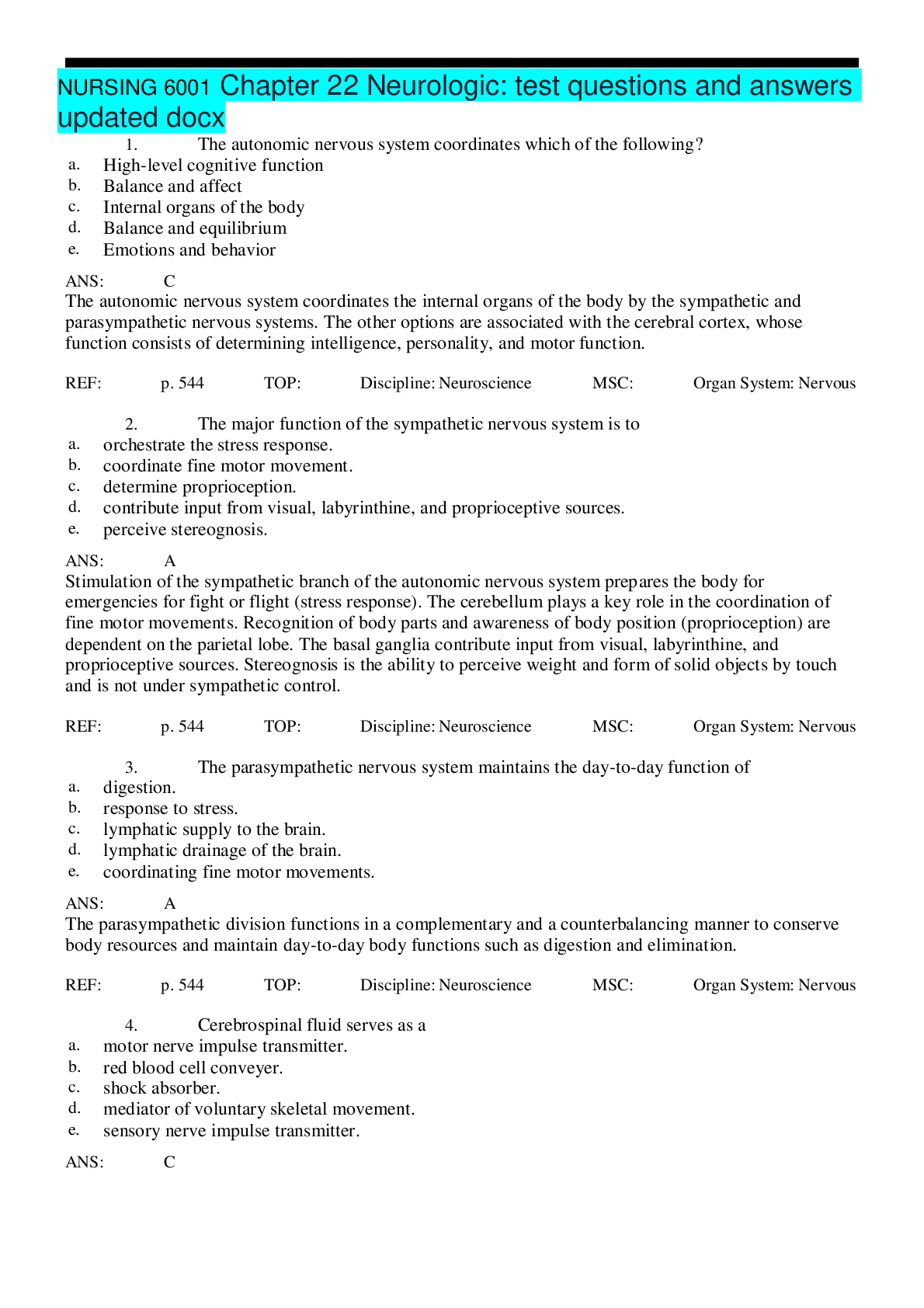
Buy this document to get the full access instantly
Instant Download Access after purchase
Add to cartInstant download
Reviews( 0 )
Document information
Connected school, study & course
About the document
Uploaded On
Oct 11, 2020
Number of pages
12
Written in
Additional information
This document has been written for:
Uploaded
Oct 11, 2020
Downloads
0
Views
46




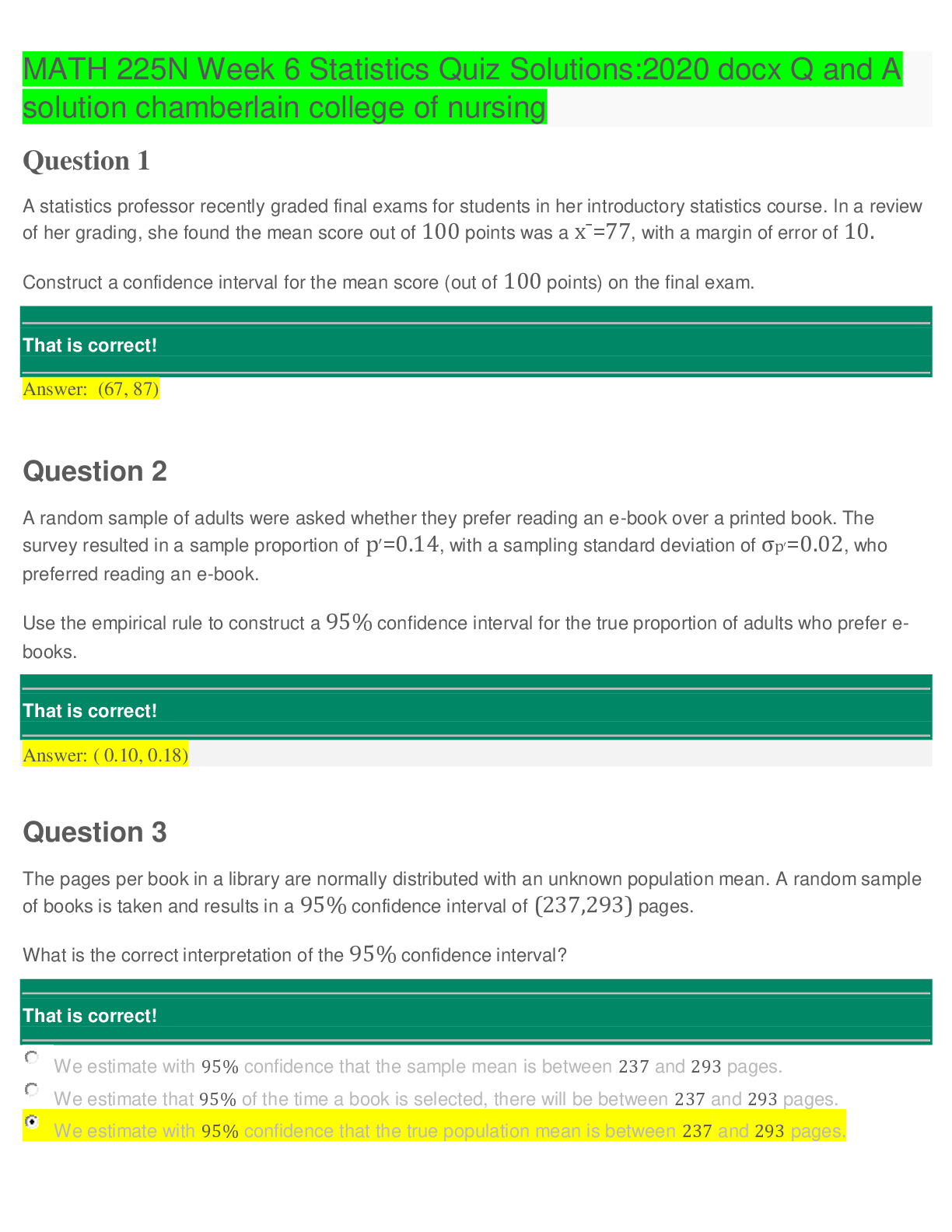

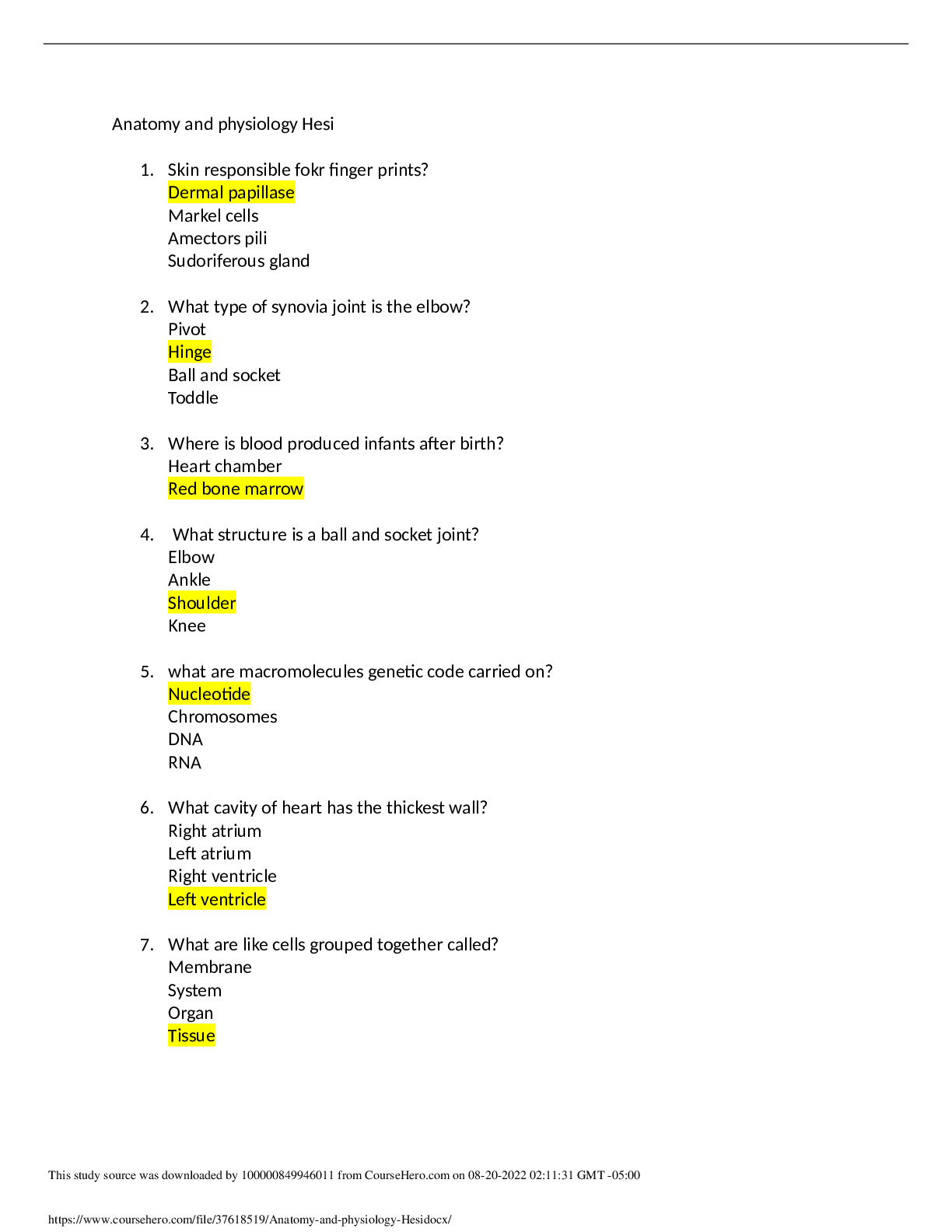
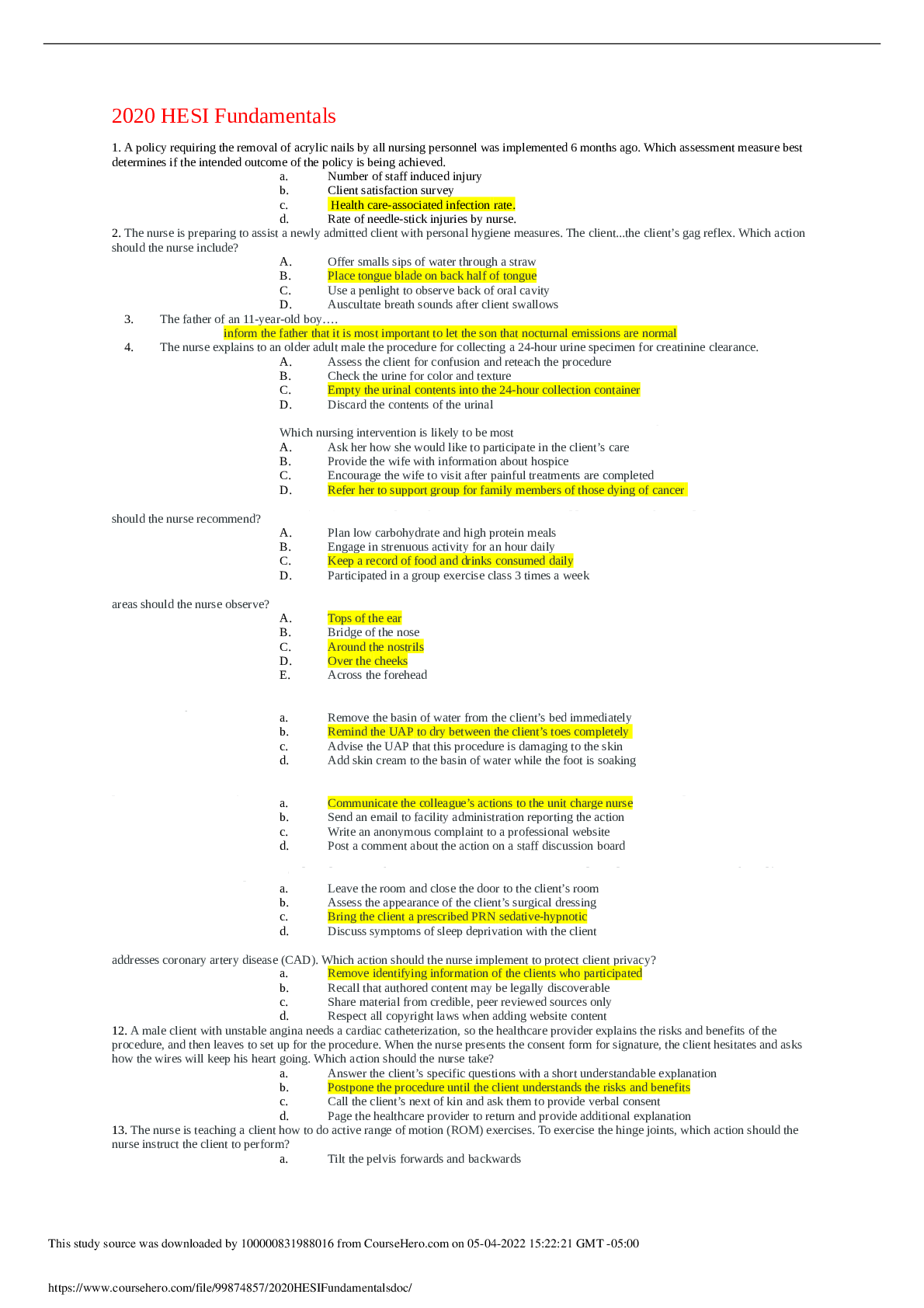

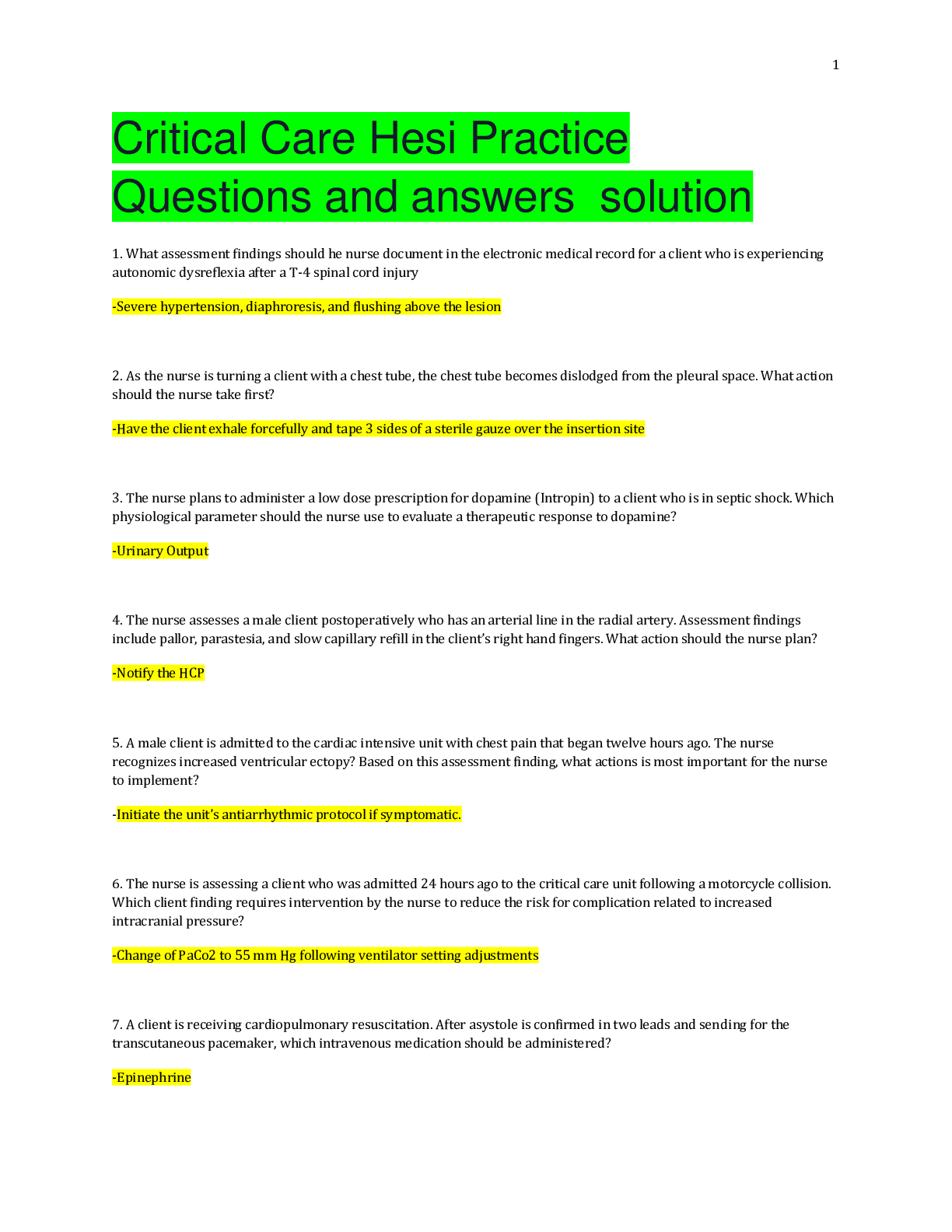
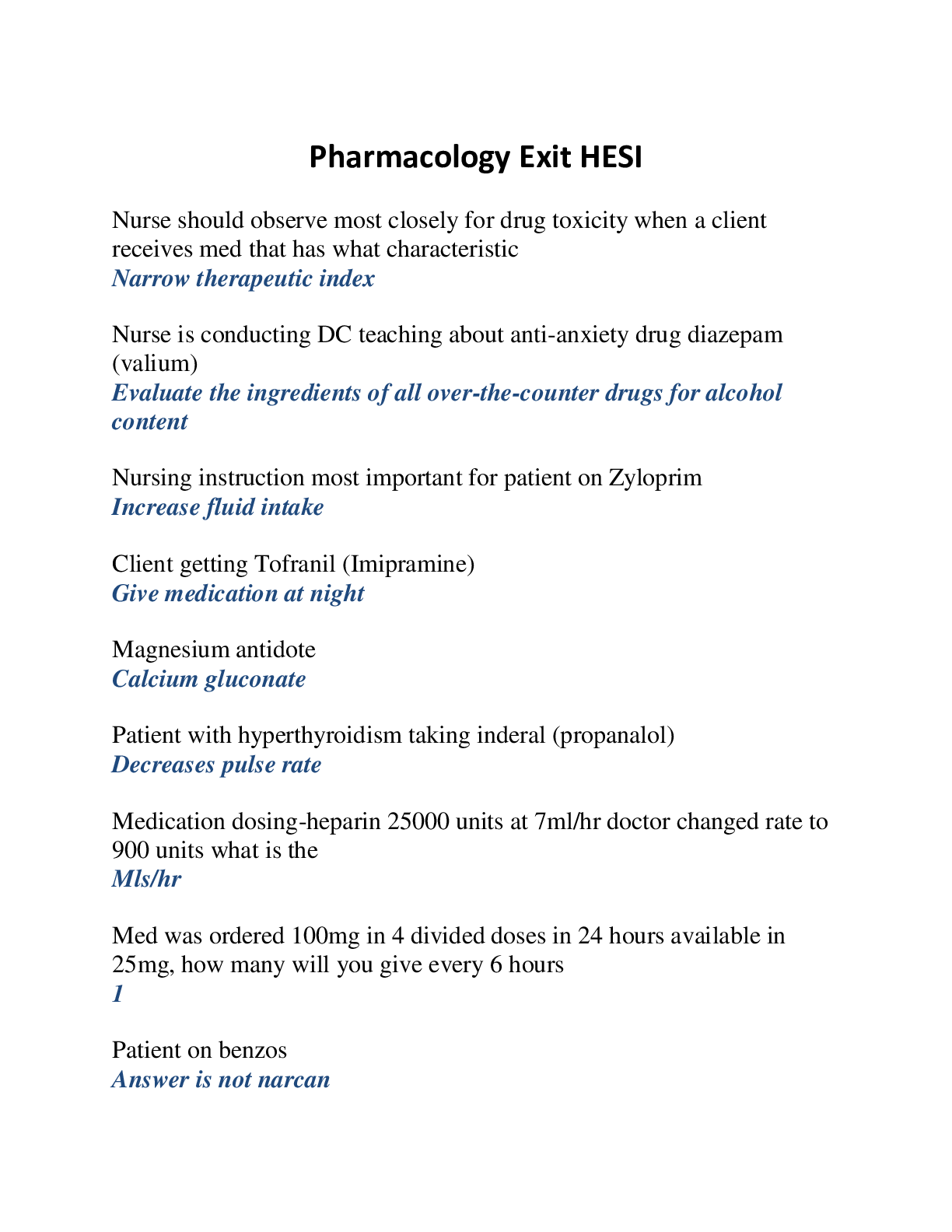
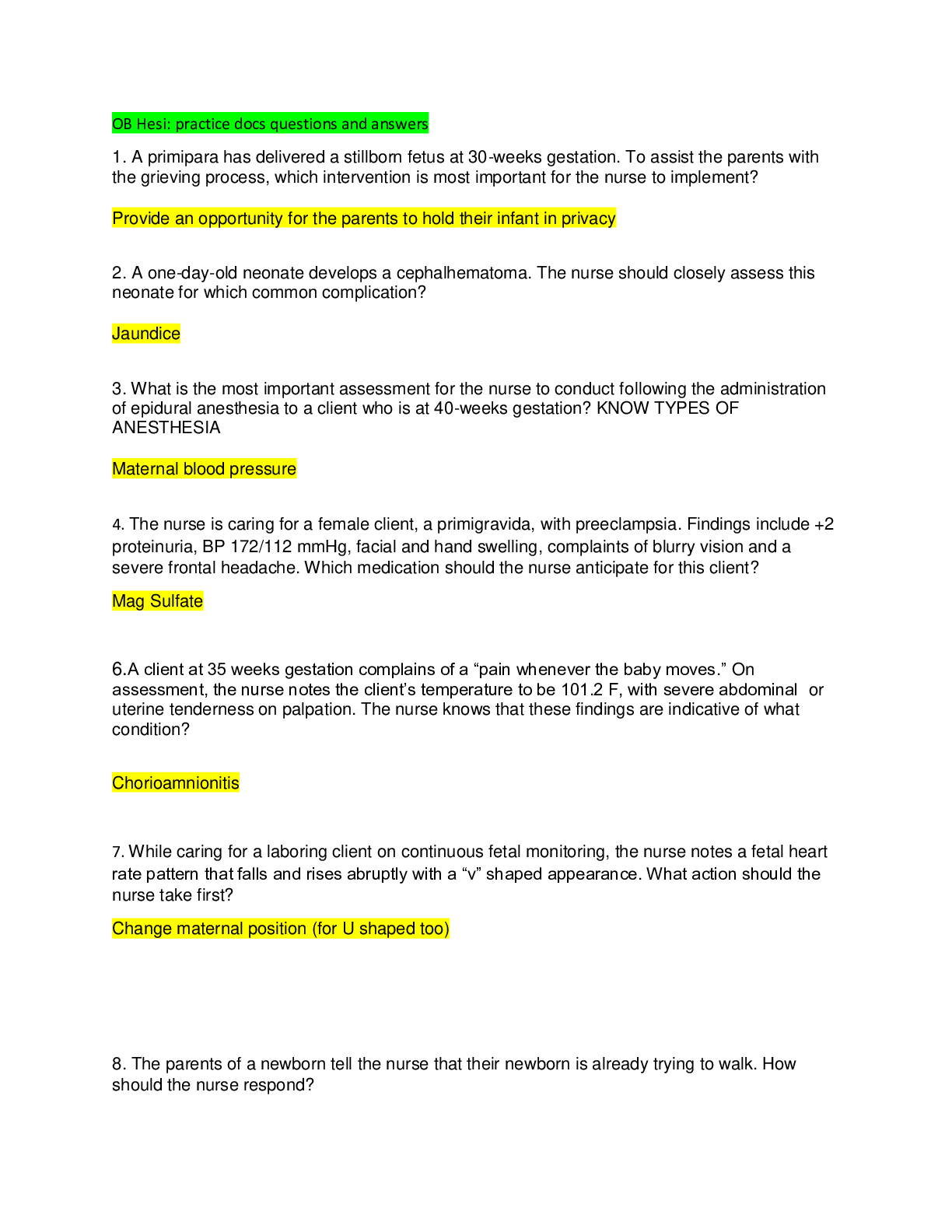






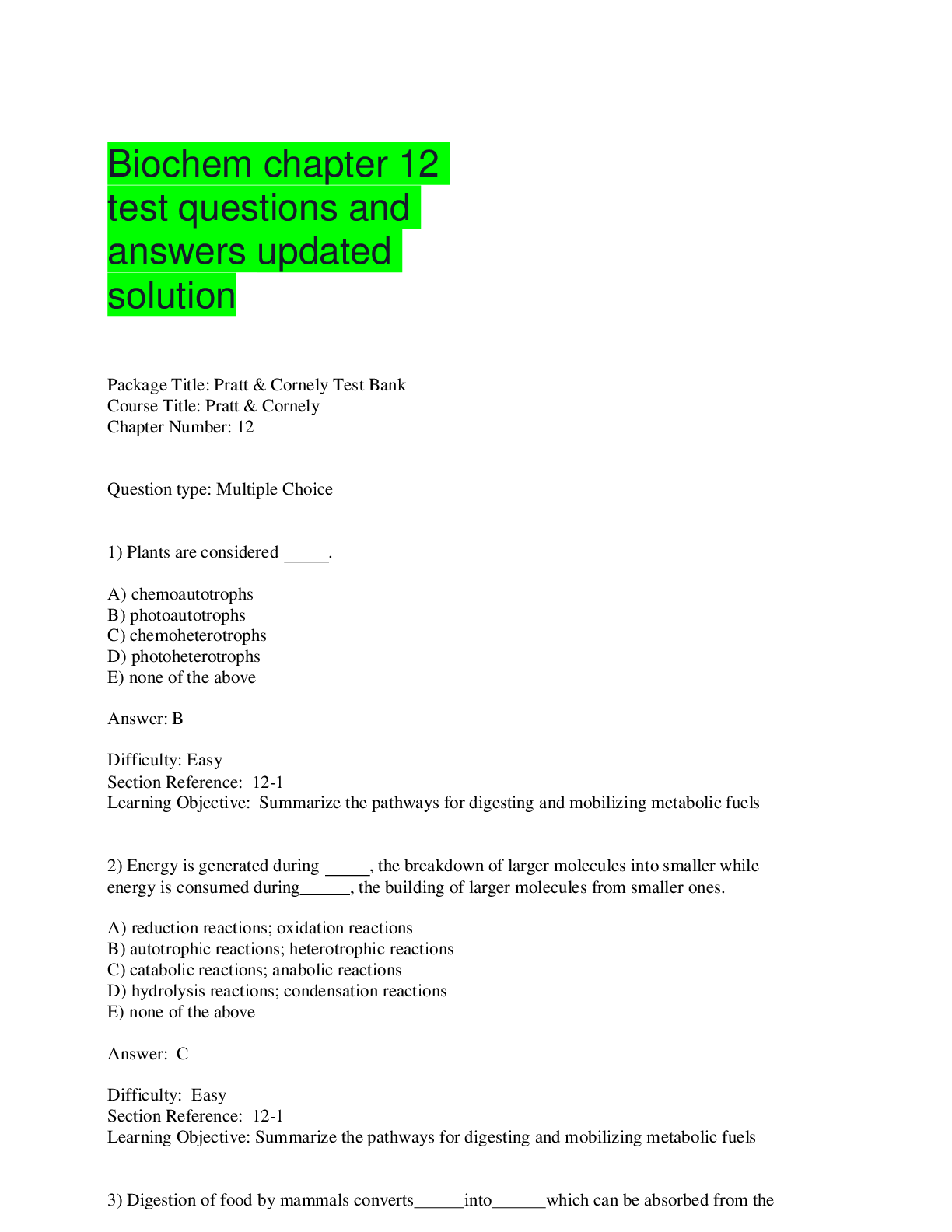
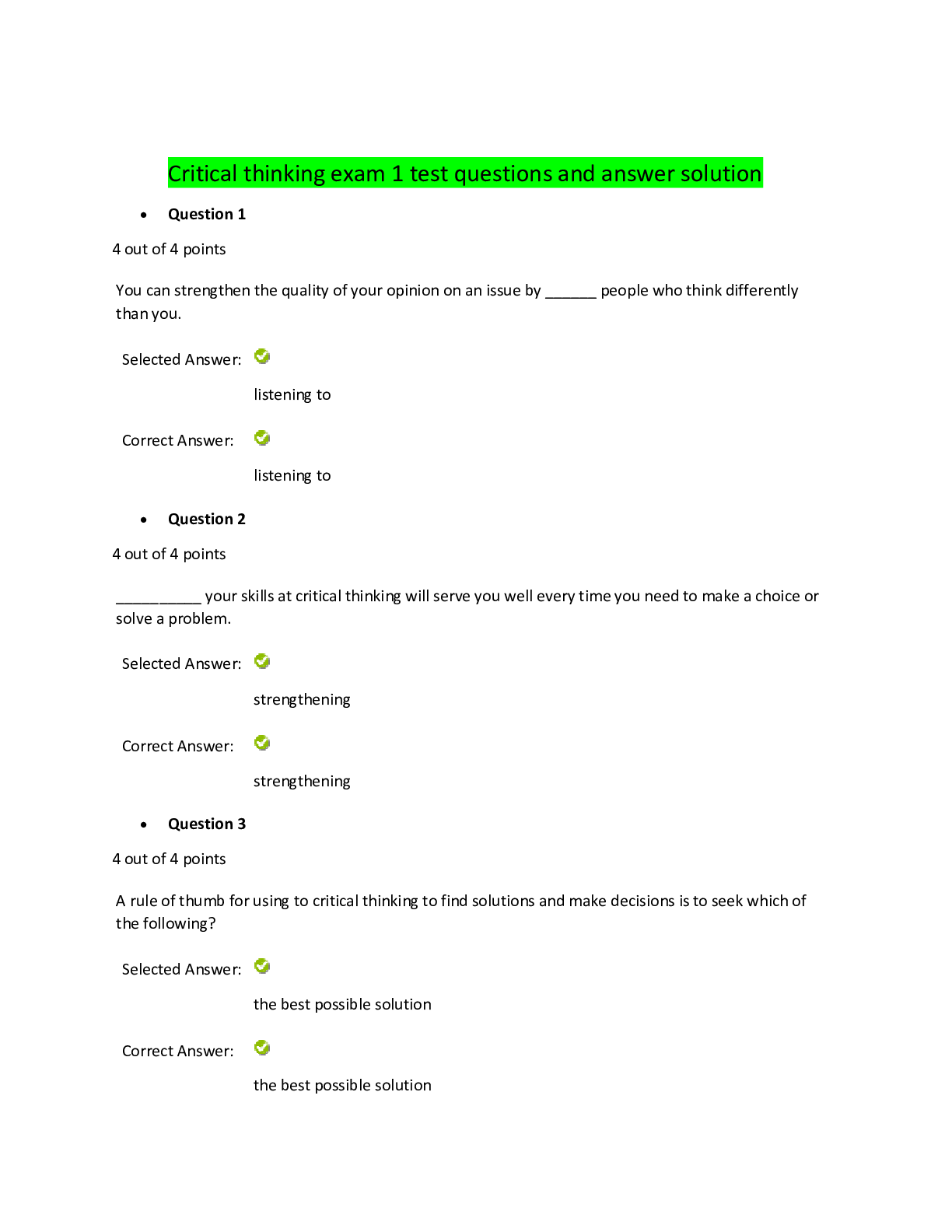
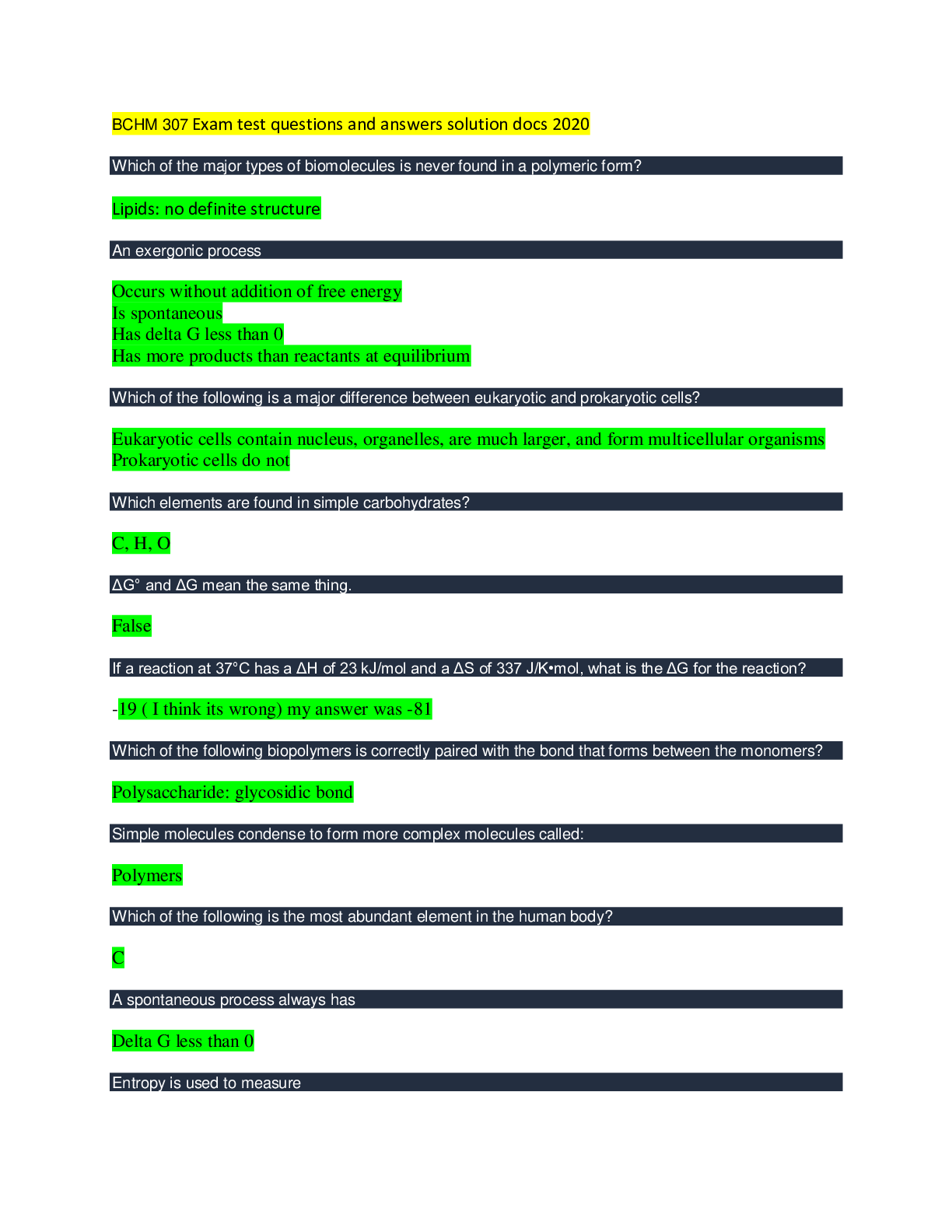

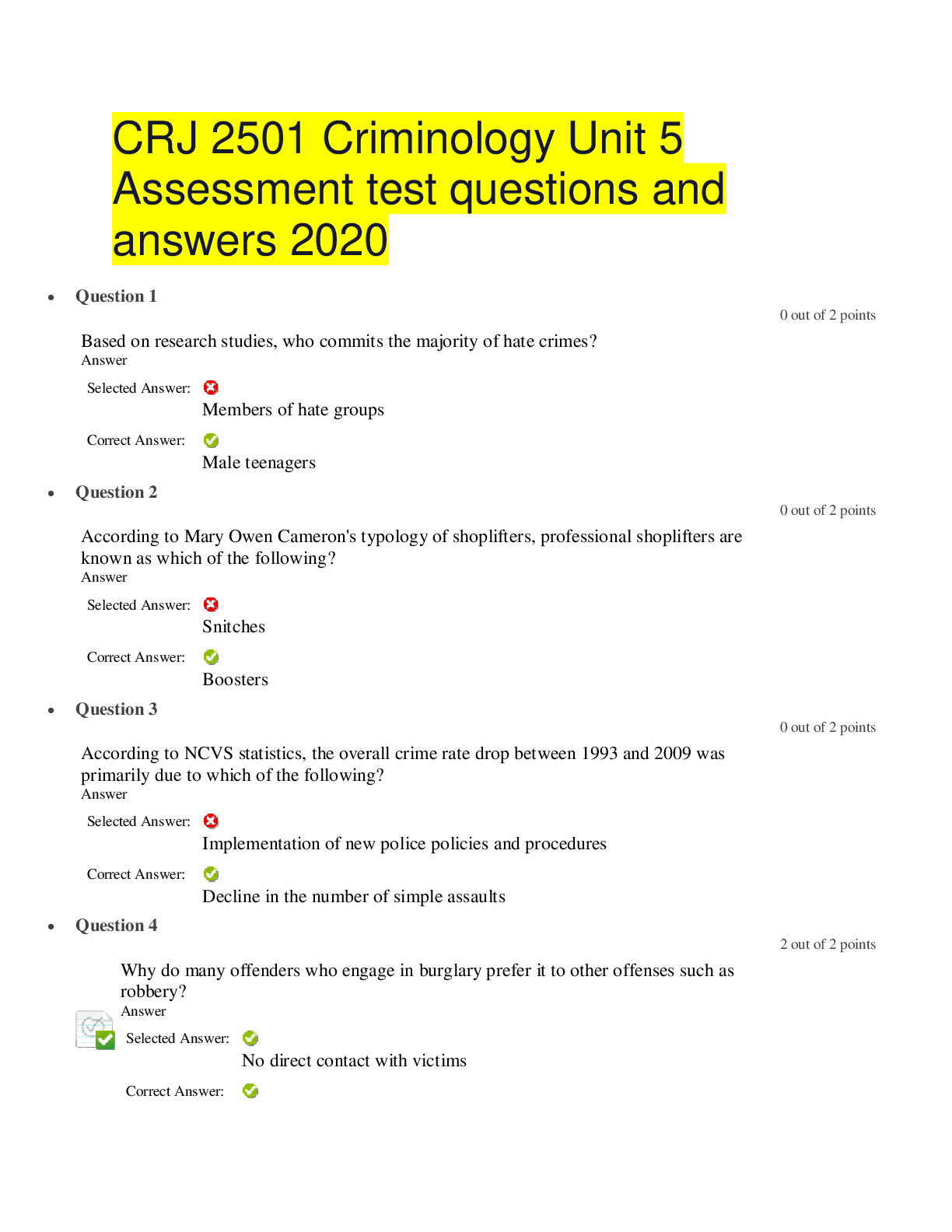
 Med Surg test Questions and Answers with Explanations, 100% Correct, Download to Score A.png)
 Med Surg test Questions and Answers with Explanations, 100% Correct, Download to Score A.png)

